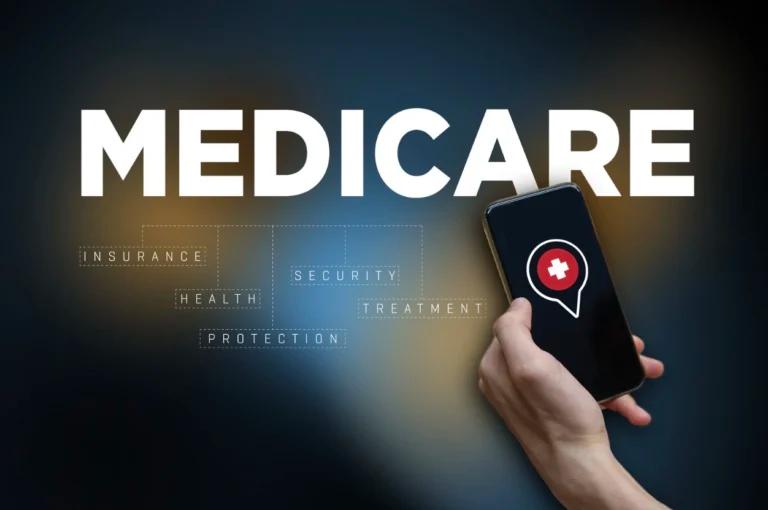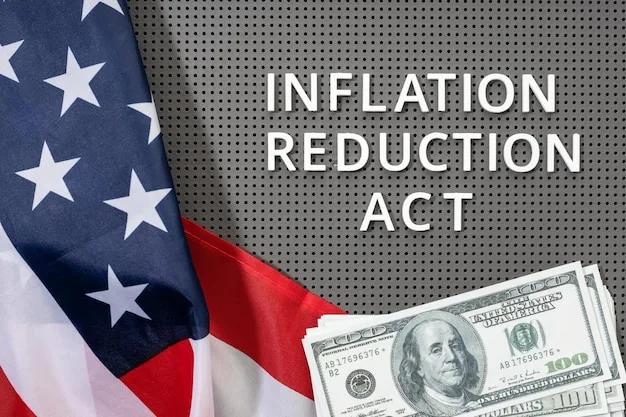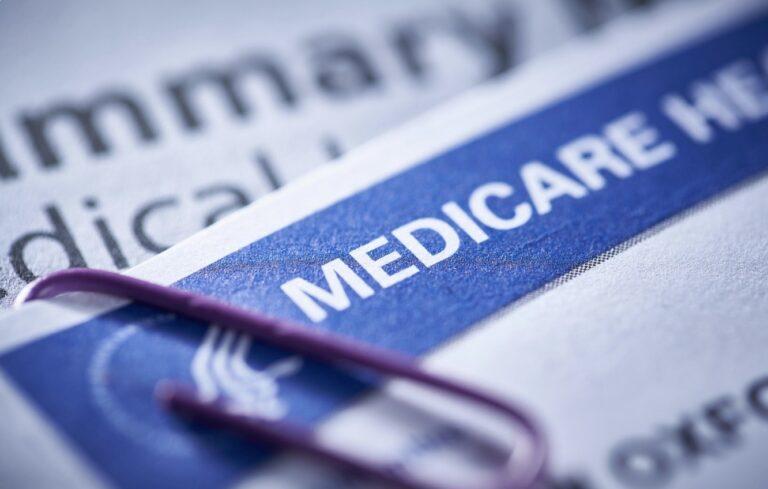Understanding Medicare Part D coverage phases
Medicare Part D is a program that provides coverage for prescription drugs. However, the cost of your drugs may change throughout the year depending on the phase of Part D coverage you are in. Choosing a Part D prescription drug plan (PDP) can be complicated but it can be broken down. There are four main phases of Part D coverage: the deductible period, the initial coverage period, the coverage gap (also known as the donut hole), and catastrophic coverage.
Deductible period
The deductible period is the initial phase of Part D coverage. During this period, you are responsible for paying the full negotiated drug price for your covered prescription drugs until you meet your Part D deductible. The deductible amount can vary from plan to plan, but in 2023, no plan’s deductible can be higher than $505.
Once you have met your deductible, the plan will begin to cover the cost of your drugs. It’s important to note that not all Part D plans have a deductible. Some plans may offer coverage without a deductible, meaning that your coverage begins as soon as you start using your prescription drugs.
Initial coverage period
After you meet your deductible, you enter the initial coverage period. During this phase, your Part D plan will help pay for your covered prescription drugs. The plan will pay a portion of the cost, and you will be responsible for a copayment or coinsurance.
The length of time you stay in the initial coverage period depends on your drug costs and your plan’s benefit structure. In 2023, most plans will end the initial coverage period once you have accumulated $4,660 in total drug costs. It’s important to note that this total includes both the amount you have paid and the amount your plan has paid for your covered drugs.
Coverage gap (donut hole)
After reaching the initial coverage limit, you enter the coverage gap, also known as the donut hole. In the past, the coverage gap meant that you were responsible for a higher percentage of the cost of your drugs. However, as of 2020, the donut hole has closed for all drugs.
Even though the donut hole has closed, there may still be a difference in cost between the initial coverage period and the coverage gap. During the coverage gap, you will be responsible for 25% of the cost of your drugs. For example, if a drug’s total cost is $100 and you paid a $20 copay during the initial coverage period, you would now be responsible for paying $25 (25% of $100) during the coverage gap.
Catastrophic coverage
Once you have reached $7,400 in out-of-pocket costs for covered drugs, you enter the catastrophic phase. This amount includes your deductible, what you paid during the initial coverage period, and almost the full cost of brand-name drugs purchased during the coverage gap. It also includes amounts paid by others on your behalf, such as family members or state assistance programs.
During the catastrophic coverage phase, you will pay significantly lower copays or coinsurance for your covered drugs for the remainder of the year. The exact amount you pay will depend on the specific plan you have chosen. In general, you can expect to pay 5% of the cost for each drug, with a minimum copay of $4.15 for generic drugs and $10.35 for brand-name drugs.
It’s important to keep track of your out-of-pocket spending and coverage periods, as your Part D plan should provide this information in your monthly statements.
Employer or union coverage
If you have healthcare coverage through your current or former employer or union, it’s important to understand how it interacts with Medicare Part D. Your employer or union will notify you each year to let you know if your drug coverage is creditable, meaning it is at least as good as Medicare Part D coverage.
Before making any changes to your coverage, it’s recommended to call your benefits administrator for more information. In some cases, if you have employer or union coverage and also enrol in Medicare Part D, you may lose your employer or union health and drug coverage, even if you qualify for Extra Help. It’s important to consider these factors before making any decisions about your coverage.
COBRA
COBRA, also known as the Consolidated Omnibus Budget Reconciliation Act, allows you to continue your employer-sponsored health coverage for a limited time after you leave your job. If you have COBRA coverage and it includes creditable prescription drug coverage, you may have a special enrollment period to join a Medicare drug plan without a penalty when your COBRA coverage ends.
It’s recommended to talk with your State Health Insurance Assistance Program (SHIP) to determine if COBRA is the right choice for you. If you have any questions about Medicare and COBRA, you can also contact the Benefits Coordination & Recovery Center at 1-855-798-2627 (TTY: 1-855-797-2627).
Medicare supplement insurance (medigap) policy with prescription drug coverage
Medicare Supplement Insurance, also known as Medigap, helps cover the gaps in Original Medicare. However, most Medigap policies do not include prescription drug coverage. If you have drug coverage under a current Medigap policy, you can keep it. However, if you join a Medicare drug plan, your Medigap insurance company must remove the prescription drug coverage from your policy and adjust your premiums accordingly.
If you are considering joining a Medicare drug plan later, it’s important to know that joining a plan after your initial enrollment period may result in higher costs and a late enrollment penalty. It’s recommended to contact your Medigap insurance company for more information on how joining a Medicare drug plan may impact your coverage.
Medicaid
Medicaid is a joint federal and state program that provides health coverage for low-income individuals and families. If you are eligible for both Medicare and Medicaid, your drug costs will be covered by Medicare, and you will need to join a Medicare drug plan for Medicare to pay for your drugs.
The amount you pay for your covered drugs under Medicaid depends on your specific situation. If you have full coverage from Medicaid and live in a nursing home, you may pay nothing for covered prescription drugs. If you live in an assisted living or adult living facility, or a residential home, you may be required to pay a small copayment for each drug.
If you do not join a Medicare drug plan, Medicare will automatically enroll you in one to ensure that you have continuous coverage. However, if you decide you want another plan, you can switch to a different plan at any time.
Supplemental security income benefits
If you receive social security benefits or assistance from your state Medicaid program to help pay your Medicare premiums, you are required to join a Medicare drug plan for Medicare to cover your prescription drugs. By joining a plan, you automatically qualify for Extra Help, which helps lower the costs of your prescription medications. If you do not join a plan, Medicare will enrol you in one to ensure that you have continuous drug coverage.
State pharmaceutical assistance program
Each state has its own State Pharmaceutical Assistance Program (SPAP), which provides additional assistance with prescription drug costs for eligible individuals. The way SPAP works with Medicare prescription drug coverage varies by state. Some states offer extra coverage when you join a Medicare drug plan, while others have separate state programs to help with prescriptions.
If you have questions about how your state’s SPAP works or if you qualify for additional assistance, it’s recommended to contact your SPAP for more information.
Long-term care facility
If you are entering, living in, or leaving a long-term care facility, such as a nursing home, you have the opportunity to choose or switch your Medicare drug plan. Long-term care pharmacies contract with Medicare drug plans to provide drug coverage to their residents. It’s important to choose a plan that contracts with your nursing home’s pharmacy to ensure seamless access to your medications.
HUD housing assistance
If you receive housing assistance from the Department of Housing and Urban Development (HUD), joining a Medicare drug plan may be beneficial. It’s important to consider your eligibility for Extra Help, as it helps lower the cost of your prescription drugs. While joining a Medicare drug plan won’t affect your housing assistance, the value of Extra Help may offset any decrease in your housing assistance as your prescription drug spending decreases.
Food stamps
If you receive food stamps, also known as the Supplemental Nutrition Assistance Program (SNAP), joining a Medicare drug plan can be advantageous. If you qualify for Extra Help, your food stamp benefits may decline, but the decline will be offset by the value of Extra Help. It’s important to note that if you’re near the eligibility cutoff for food stamps, your minimum benefits may decrease as your prescription drug costs decrease.
Health insurance marketplace
The Health Insurance Marketplace, also known as the Marketplace or exchange, is a service that helps individuals and families shop for and enrol in affordable health insurance plans. If you have health coverage through the Marketplace, it’s important to understand if it is considered creditable prescription drug coverage. In most cases, it will be to your advantage to keep your current coverage.
Other insurance coverage
There are various types of insurance coverage that may interact with Medicare Part D. This includes coverage through the Federal Employee Health Benefits (FEHB) Program for federal employees and their families, veterans’ benefits through the U.S. Department of Veterans Affairs (VA), TRICARE for active-duty service members and military retirees, and the Civilian Health and Medical Program of the Department of Veterans Affairs (CHAMPVA) for eligible beneficiaries.
It’s important to understand how these types of insurance coverage work with Medicare Part D plan. In most cases, you may not need to join a Medicare drug plan if you have one of these types of coverage. However, there may be specific considerations and coordination of benefits that you should be aware of. It’s recommended to contact the respective programs or agencies for more information on how their coverage works with Medicare Part D.
Conclusion
Understanding the different phases of Medicare Part D coverage is essential for managing your prescription drug costs effectively. From the deductible period to catastrophic coverage, navigating the complexities of Part D can be challenging. By considering your specific circumstances, such as employer or union coverage, COBRA, Medigap policies, Medicaid, and other insurance coverage, you can make informed decisions about your drug coverage.
Remember to review your options carefully, consult with your benefits administrator or relevant programs, and take advantage of available resources like State Health Insurance Assistance Programs (SHIP) to ensure that you choose the right coverage for your needs. Medicare Part D plan is designed to provide affordable access to necessary medications, and by understanding its coverage phases, you can take full advantage of the benefits it offers.
Sources
Medical Disclaimer
NowPatient has taken all reasonable steps to ensure that all material is factually accurate, complete, and current. However, the knowledge and experience of a qualified healthcare professional should always be sought after instead of using the information on this page. Before taking any drug, you should always speak to your doctor or another qualified healthcare provider.
The information provided here about medications is subject to change and is not meant to include all uses, precautions, warnings, directions, drug interactions, allergic reactions, or negative effects. The absence of warnings or other information for a particular medication does not imply that the medication or medication combination is appropriate for all patients or for all possible purposes.







